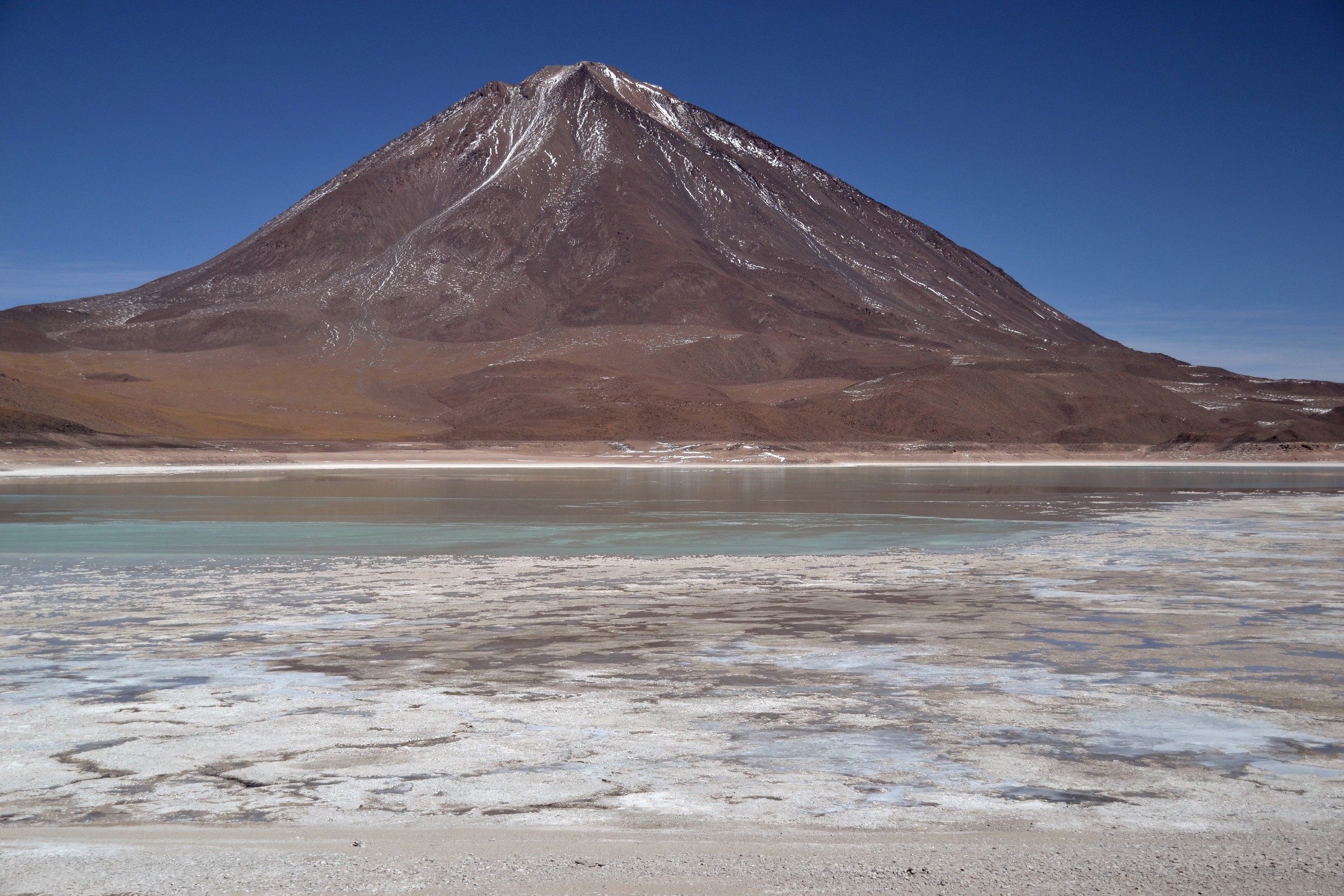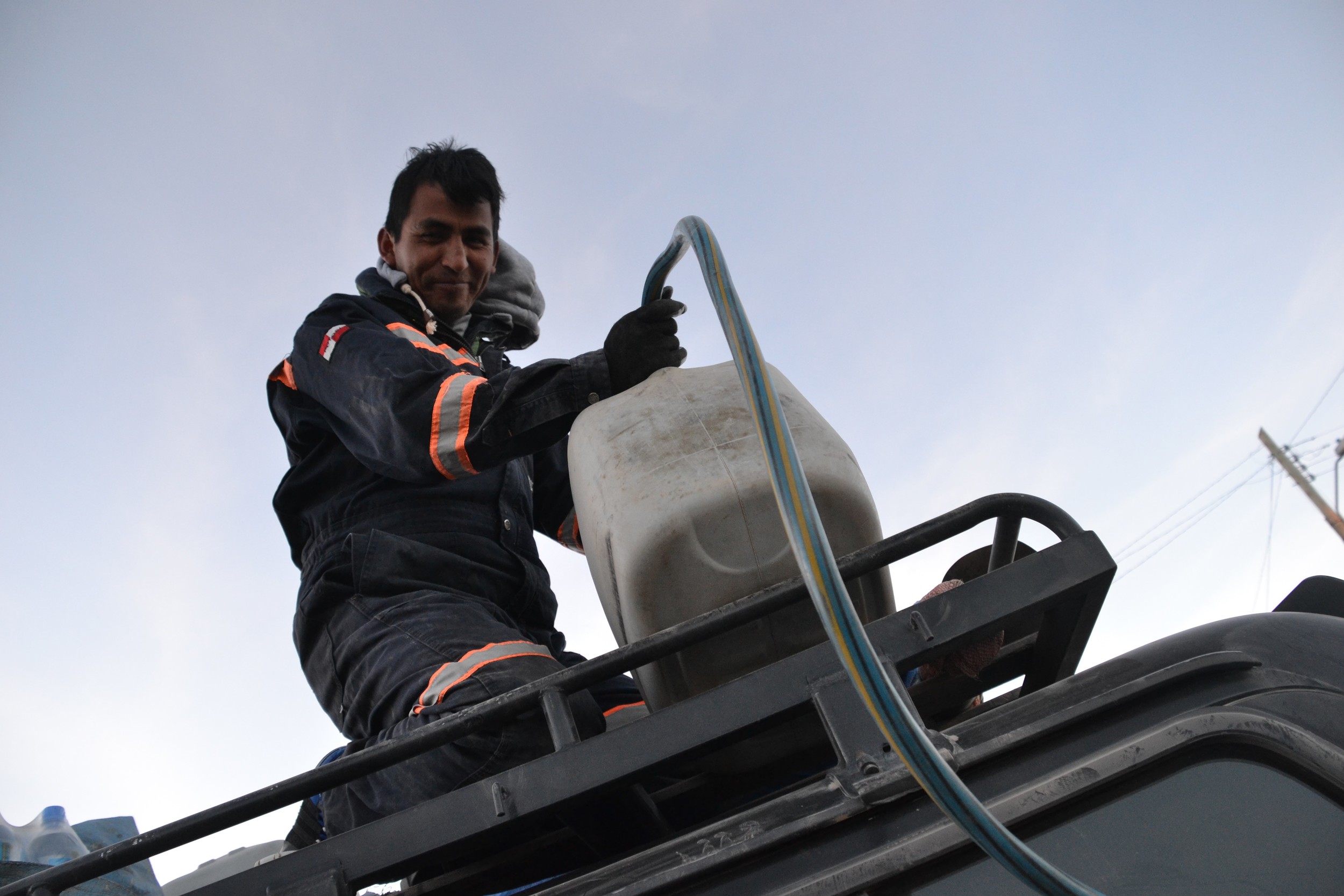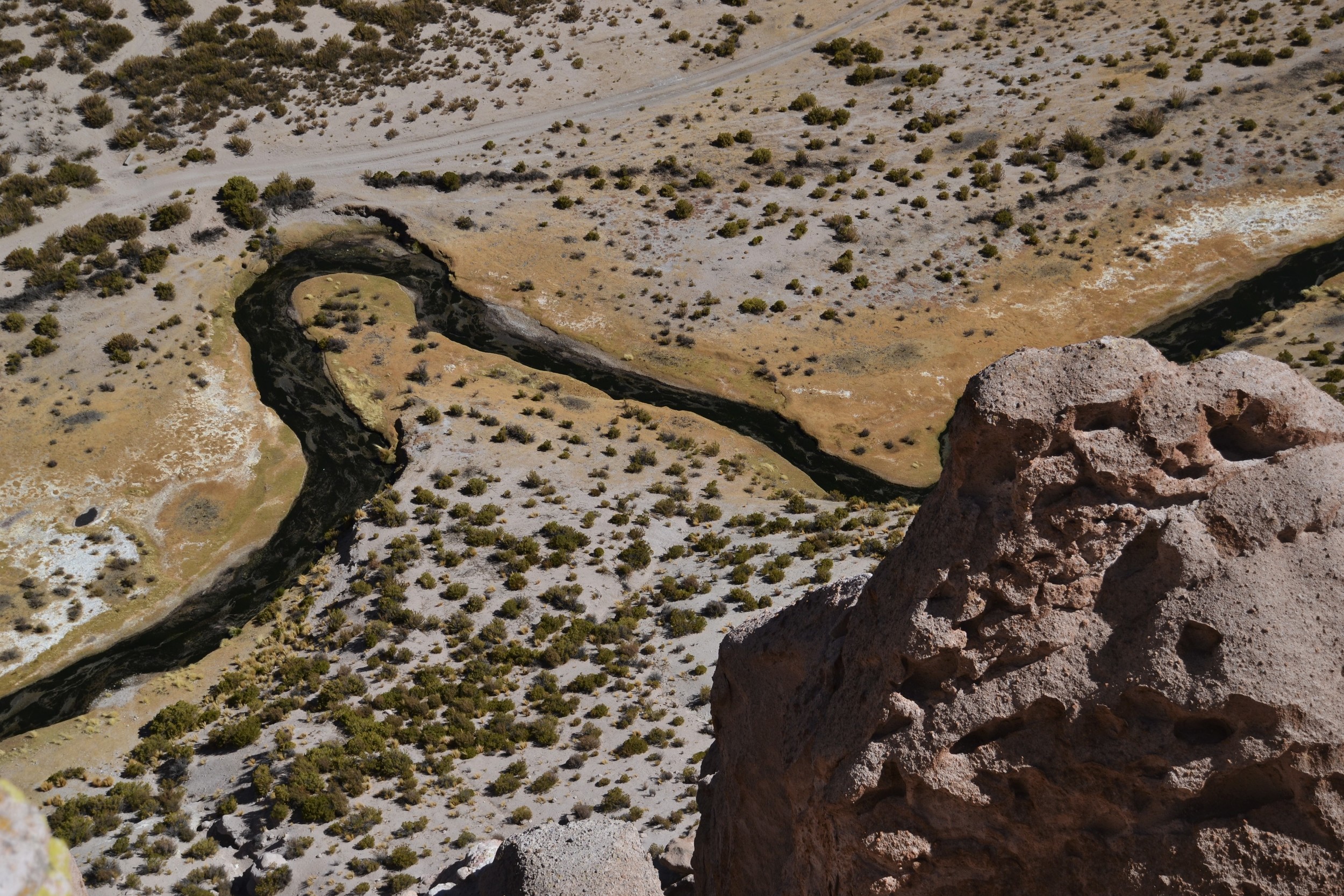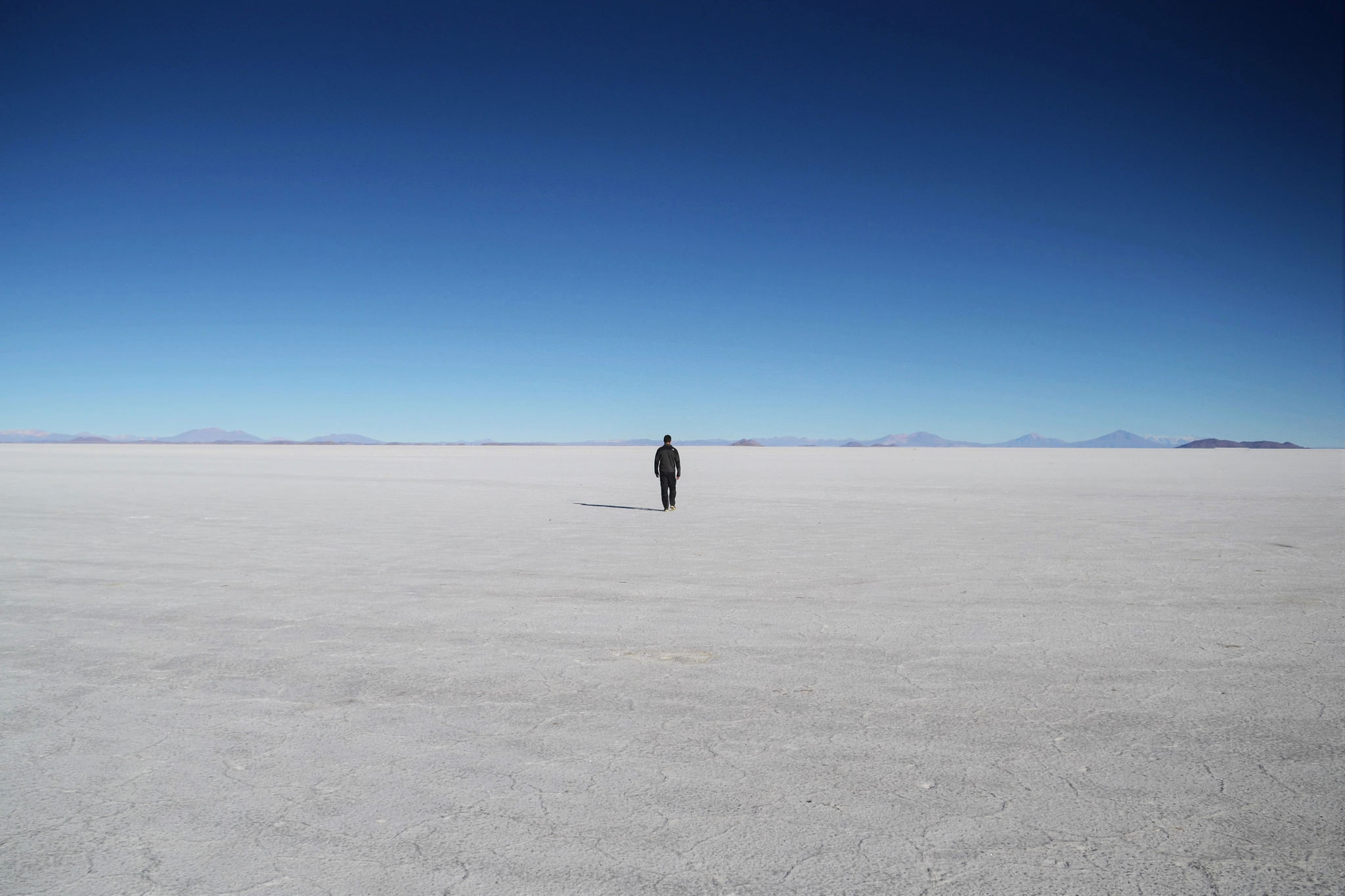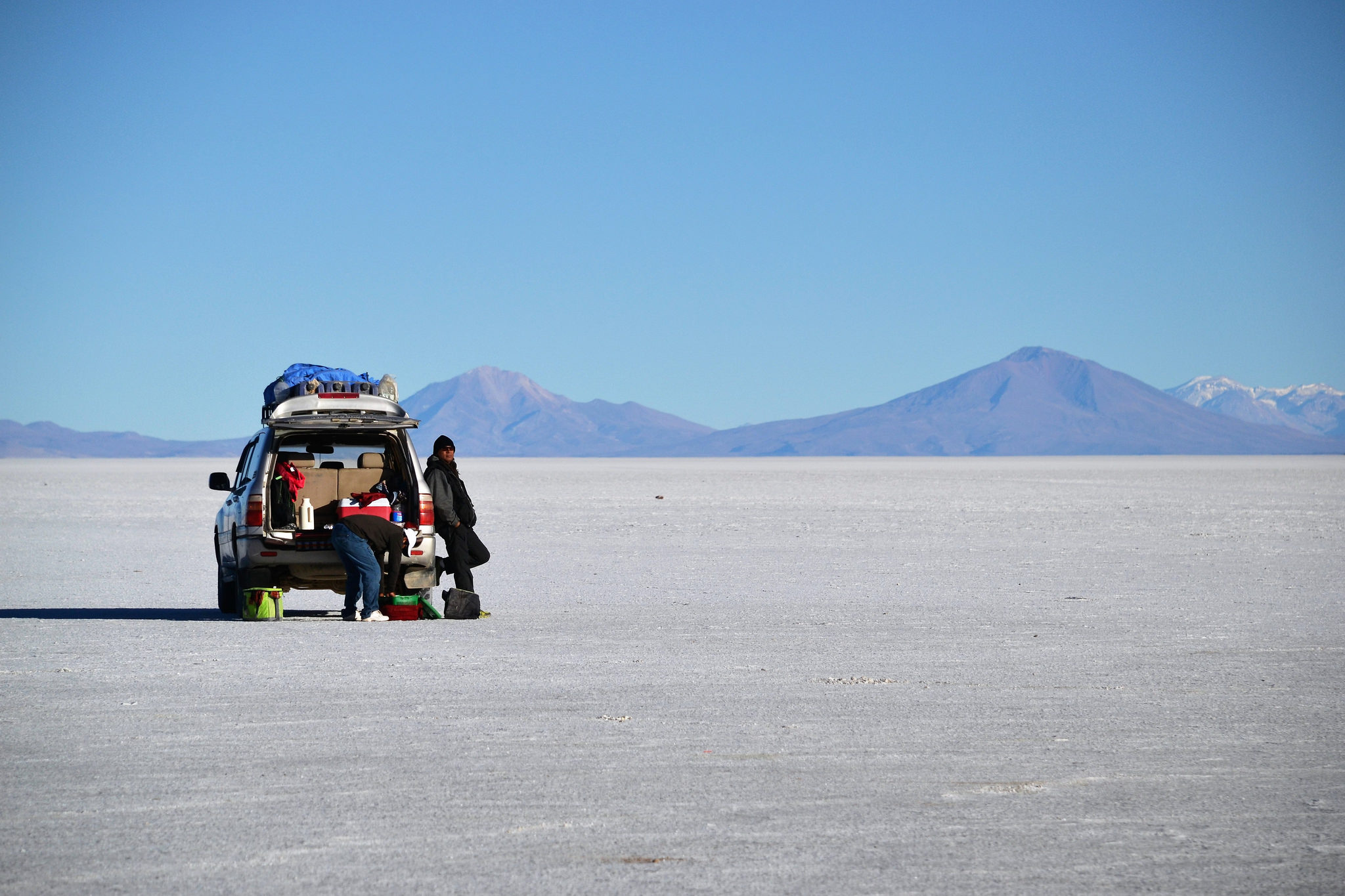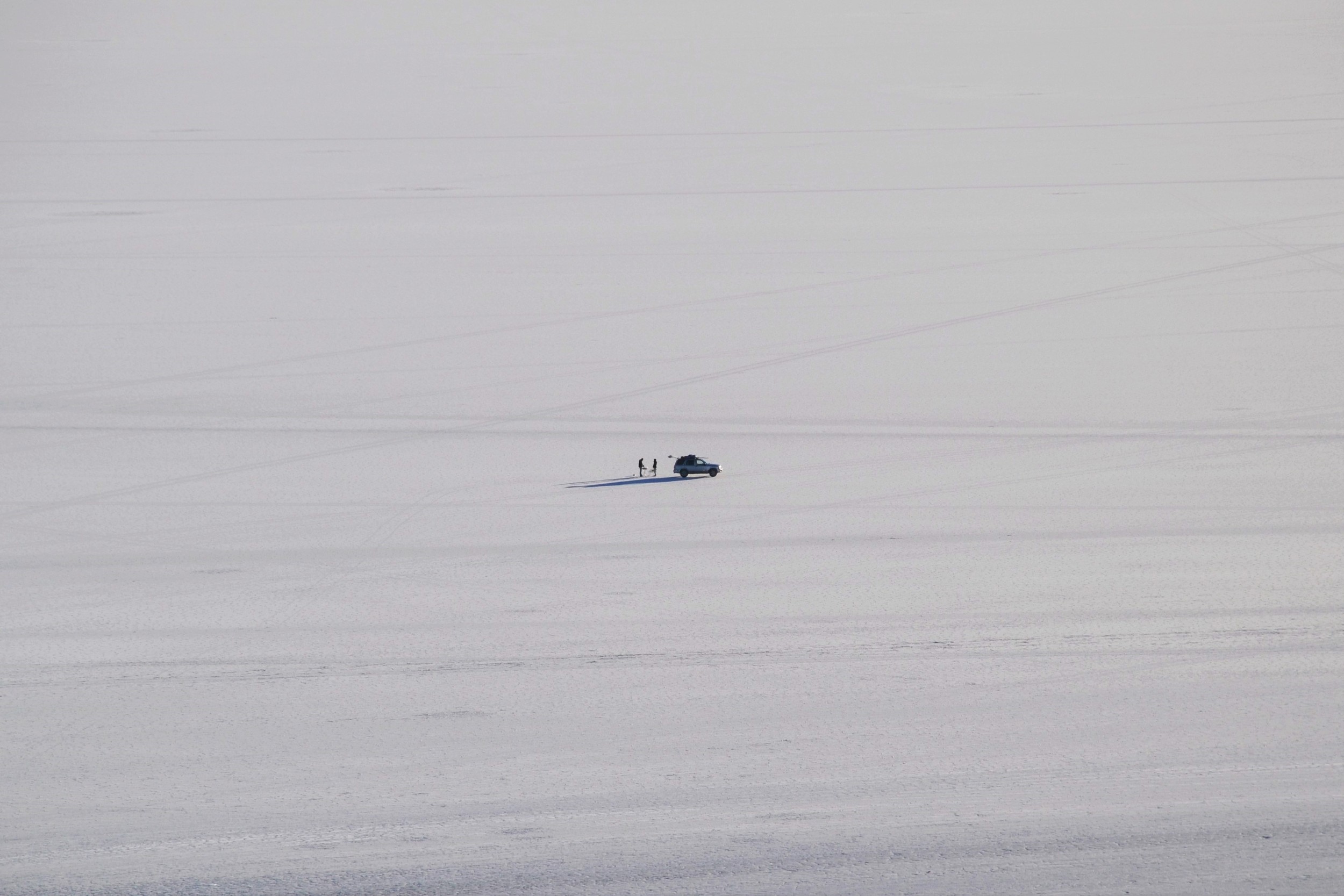My spectacular four day journey from Tupiza to Uyuni, in brief. Click on images to expand.
Day One:
The jeep collects my party at 7am on a chilly Tupiza morning, just as sunlight strikes the red mountains that surround the town. It's a sturdy-looking vehicle, packed full of food and water bottles. It's driven by Mayco (pronounced "Micheal") a good-natured Bolivian with a jokey manner and a few teeth missing, his eyes usually hidden under a pair of stylish shades.
With him is the cook for our journey (a shy young woman named Maria), who cradles her gently cooing infant son. She has been bringing her child on these trips since he was one month old; he is calm and peaceful as still water, as long as he is in a car.
My group consists of an Englishman (me), a French girl, and two Swiss German men, placed together at the whim of our tour company. The French girl speaks a little English and a lot of Spanish. The Swiss Germans speak a lot of English and a little French. Our driver speaks only Spanish, and I'm left flailing for words in between.
Somehow, our little group will muddle through.
Mayco, our driver.
The jeep tears away from Tupiza, tracing craggy roads over lunar canyons and misty valleys. The landscape is dry, featuring great scarps of beige and barren brown, peppered with scrappy bushes and looming cacti.
Mountains rise over us. We drive and drive, through huge ranks of parting Earth.
Occasionally, there is a break to go to the bathroom.
Day two:
It is cold.
It is terribly, terribly cold.
After a night spent in a chilly little lodge, we resume driving early in the morning--early enough that to remove gloves is to risk frozen fingers. The dry landscape of the previous day quickly gives away to snowy peaks and dead volcanoes, encircling icy lagoons.
My party shakes and shivers, as we dutifully take photographs at every opportunity.
My group in the cold, while Mayco explains a salty lake to us.
In the middle of the day, we stop at a steaming thermal spring--a gift from old volcanoes. At the foot of the mountain Cerro Polques, the spring is a balmy 29.4°C, and rich in minerals. Bathing there, we regain some memory of warmth, until our driver urges us out of the water and back into our many clothes.
Emphasis on the many. It gets so cold after dark, the only solution is to layer up. For the most part, we will wear the same clothes for four days without pause, occasionally dropping a jumper or two during the sunny midday--stripping to change at night would be unbearably chilly. Showers are available at some of our rudimentary lodgings, but only for B$ 10.
After the spring, we pause briefly at an active geiser; a sulfurous splint of land where the earth is bubbling clay and billowing smoke. Surrounded by pools of seething primordial-esque goop, it feels like the beginning of the world. It smells like the end.
For the finale of the second day, we visit the famous Laguna Colorada--a vast salt lake, its waters dyed red by sediments and algae. Flamingos flock to the lake in droves, despite the fact the cold sometimes kills them while they nest and feed.
While we admire the lake, I become pathologically obsessed with getting a good picture of the flamingos.
Much to their dismay, as they try to fly away.
Day Three:
We walk.
Our group is freed from the confines of the jeep for most of the day, as Mayco leads us on a series of short hikes through surreal scarps of twisted rock that look like they belong in an 80s fantasy movie.
(And is there any animal that looks more like a fantasy creature come to life than the silly llama?)
Other jeeps flying across the land.
Throughout the whole expedition, our only real company comes from other jeeps; other tour groups plying the same route. About 50 people per day embark on an odyssey through Bolivia's southwest circuit from the town of Uyuni, more still from Tupiza. The region feels eerily barren, empty but the roving jeeps, and the occasional quaint little Bolivian village, farming quinoa.
It's a bit like being in a car advert, watching Land Rovers cut lines of dust across the sweeping mountains.
Day Four:
There is nothing.
A bright white void surrounds me. It isn't like land and isn't a sea; just mile upon mile of cracked, powdery salt. Bolivia's famous Salt Flats (the Salar de Uyuni) span 10,582 square kilometers, at an altitude of 3,656 meters above. The salt is the leftover remains of a vast prehistoric lake, which dried to nothing thousands of years ago.
The area is so flat and featureless that it's used for calibrating satellite altimeters. In the centre of the white void sits the surreal Isla Incahuasi, an outcrop of volcanic rock covered in enormous cacti. There, jeeps converge and tourists gather to watch the sun rise across the snowy flats.
Needless to say, it is very cold.
Me, in the Salt Flats.
In some ways, the journey from Tupiza to Uyuni (or vice versa, if you're doing the trip from the other direction) is punishing in its spectacle. Every day is a constant barrage of mind-boggling vistas, awe beaten into you again and again by the impossible scale of the world. Four ripe days in a jeep, plus coldness and tiredness, can be pretty draining by the end.
And yet when our jeep escapes the Salt Flats, and crawls to the dusty desert town of Uyuni (where prospects abound for hot showers and transport elsewhere) there's a curious melancholy to leaving the car and our faithful driver behind.
We saw all sorts of wonders, in that sturdy vehicle.
Every day was like a different planet.
And now we must come back to Earth.
EXTRA BITS
> In keeping with Salt Flat tour tradition, our group spent one night in a hotel made of salt. It wasn't as cold as I expected, but it's a bit of a gimmick; you can't even eat the walls.
> Our group found good company with another party of four from the same tour operator; our jeeps crossed paths at regular intervals. It was nice to have lots of little reunions with our newfound friends, in the most desolate reaches of Bolivia.
> The company I toured with was called "Natural Adventure." I heartily recommend them, despite their adorably worded catch phrase: "The Best Way To Enjoy The Nature."
> And of course when you're on the Salt Flats, there are the obligatory silly perspective pictures, afforded by the total lack of landmarks in the white space. So if you're going, don't forget to bring along, for instance... a hat:









